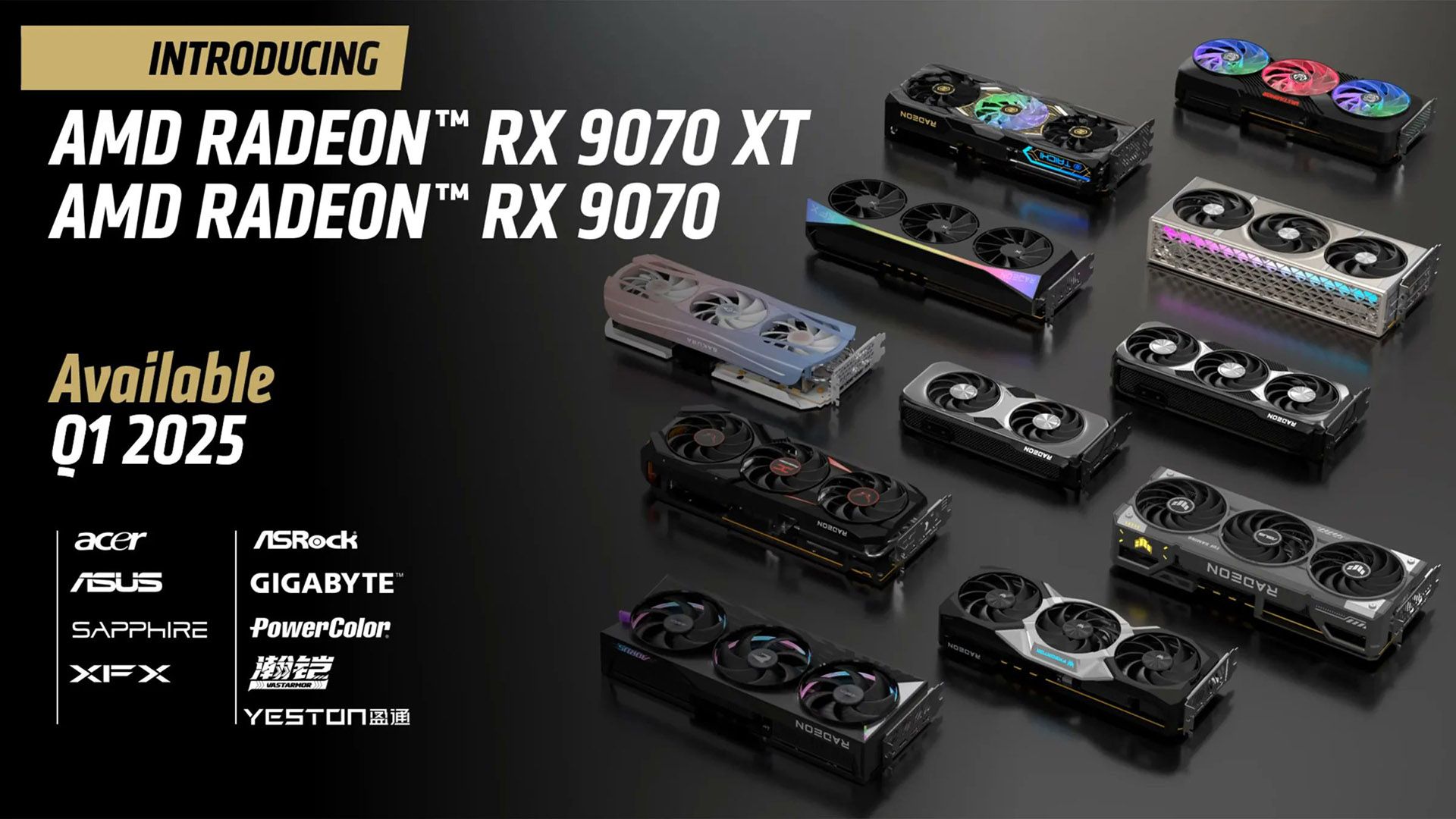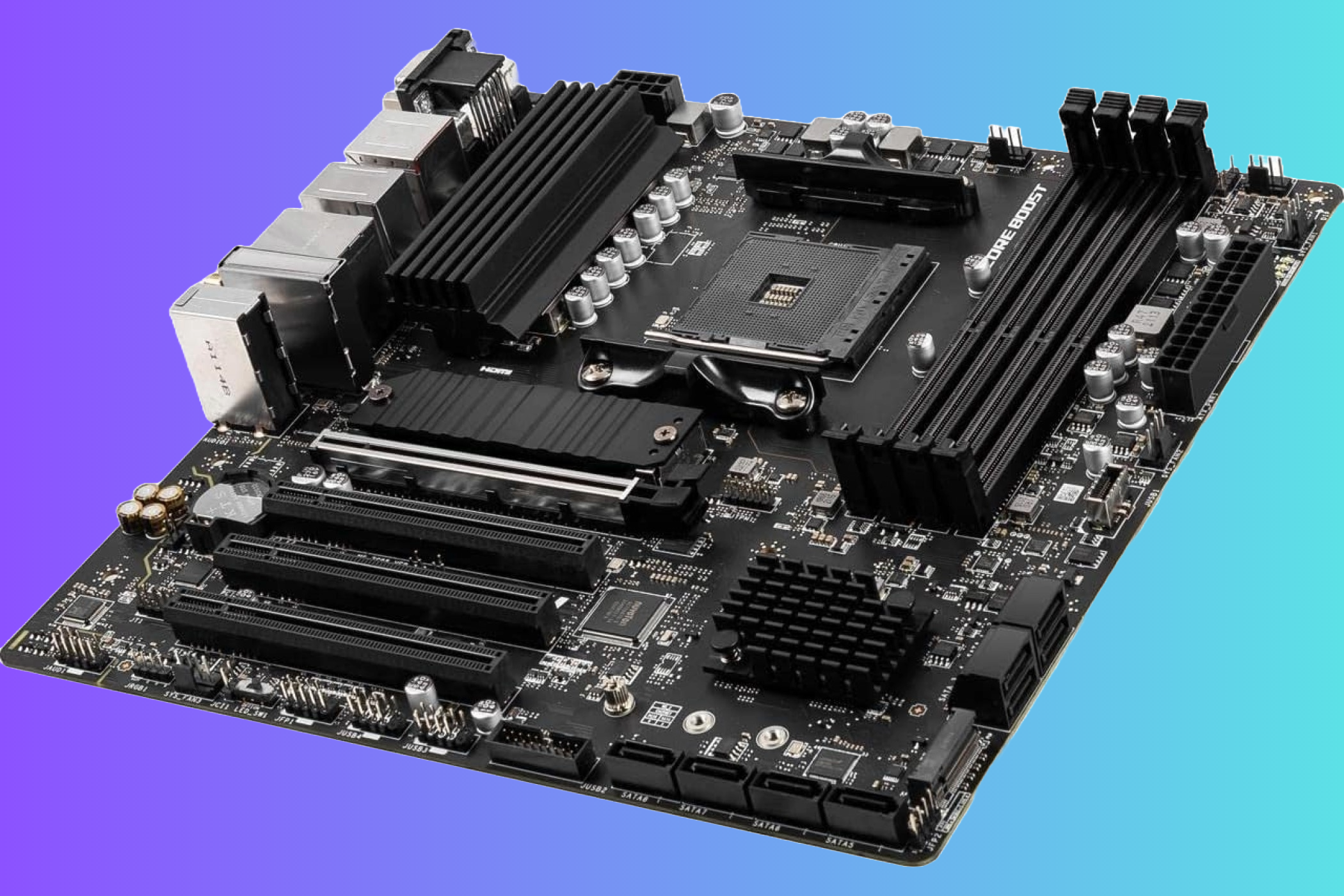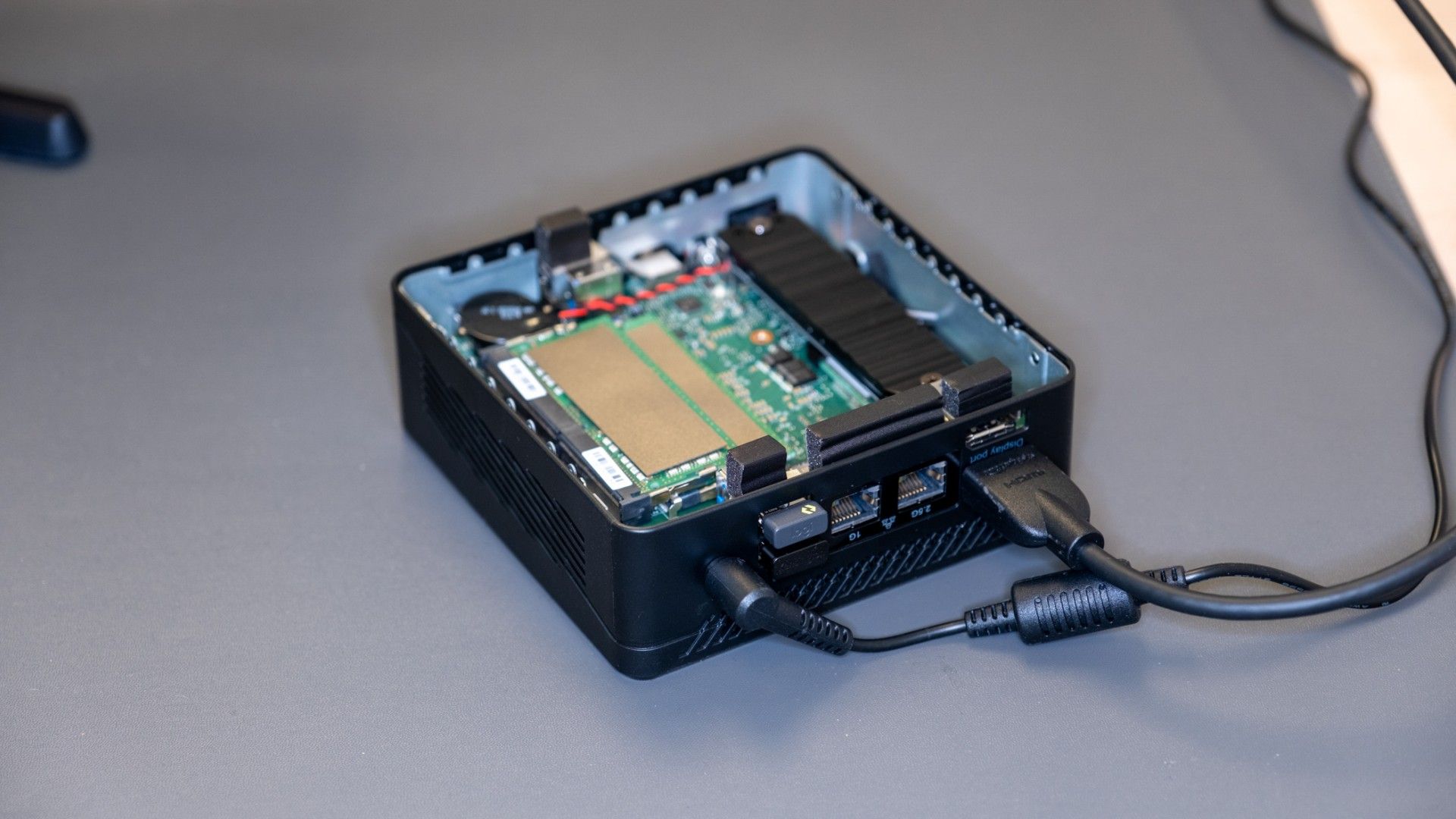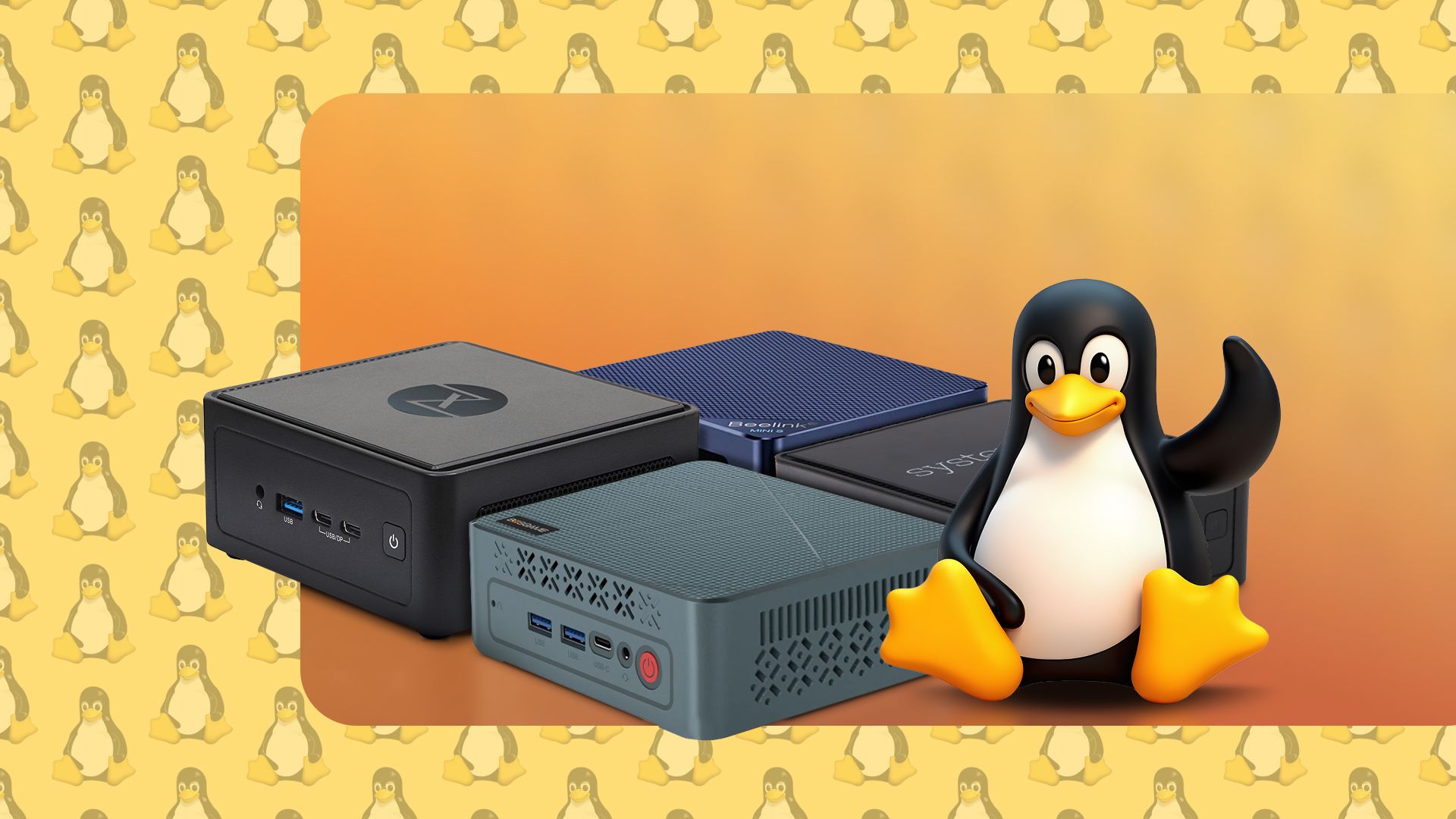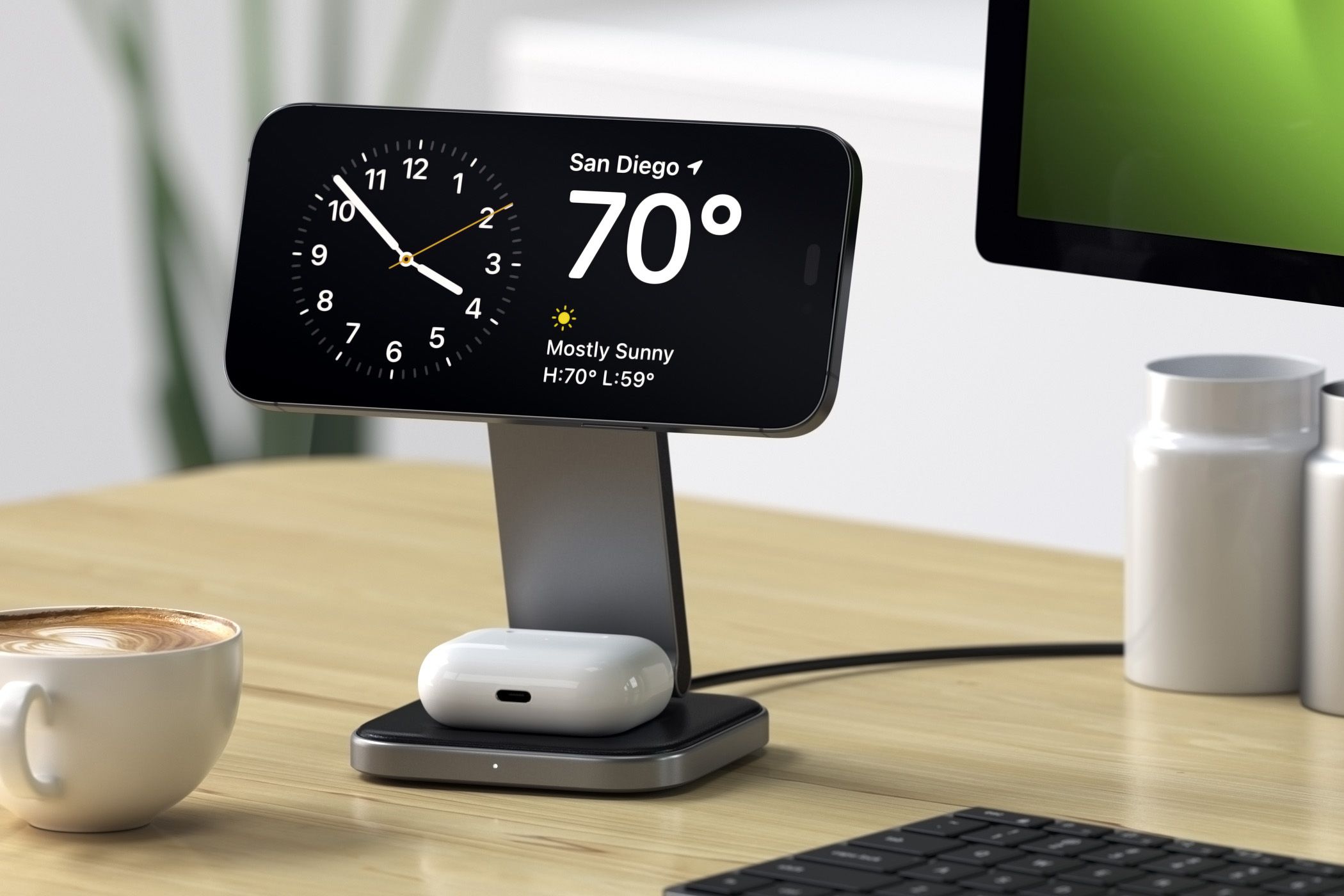Why Linux Is the Perfect OS for Your Mini PC
Computer Hardware
If you’re as big a fan of mini PCs as we are, you probably like their affordability, efficiency, and versatility. That’s why they make a perfect pair with Linux.
Why Choose a Mini PC?
Mini PCs are exactly what the name says: full desktop PCs in a miniaturized form factor (usually not much bigger than a couple of smartphones stacked up).
Looking back, the genesis of mini PCs was largely disappointing. They looked cool and could be tucked behind your monitor (no more mostly-empty giant steel PC cases attacking your shins from under your desk), but they were slow, and usually the only expansion method was a few USB 2/3 ports—fast enough for a bit of extra storage for watching movies from or adding a Wi-Fi adapter, but not enough to connect GPUs or high-speed storage for gaming or upgrading your workstation.
They did, however, find their niches as home media centers, for IoT and automation, and as home servers due to their low power consumption and silence.
That’s all changed with the last few generations of faster, more power-efficient CPUs. mini PCs can hold their own for all but the most demanding use-cases, and be expanded with external GPUs if they support Thunderbolt 4 (and Thunderbolt 5 is on the way with even faster speeds). While the high-end of computing will always be dominated by big cases for holding big expensive hardware, mini PCs are affordable, accessible, and increasingly upgradable.

MINISFORUM UM890 Pro
Mini PCs don’t have to be slow, which the MINISFORUM UM890 Pro proves without a doubt. This compact computing box comes with a beastly CPU, an integrated GPU fast enough even for low-detail AAA gaming, and plenty of upgradable memory and storage.
$810 at Amazon
See at Newegg
In the age of tiny apartments and big power bills, mini PCs are a power-sipping, portable, sensible choice for home users who need a solid productivity machine, with the option of adding a bit of plug-and-play “oomph” later on.
As Little or as Much Linux OS as You Need
Depending on the vendor, many mini PCs ship with illegitimate copies of Windows (some with pre-installed malware), so the first thing you should do once your diminutive desktop computer has been unboxed is completely wipe it and re-install an operating system from scratch. And what better operating system to drive these little computers than Linux?
Linux can be as light or as heavy as you want: strip it to the traditional desktop basics by using a minimalist desktop environment like XFCE or LXQT, or load it up with a full-fat desktop environment like GNOME or KDE and customize it with widgets, animations, and integrated apps. There’s also tiling window managers if you want to be really efficient with your screen space. If you’re building a server, you can skip the desktop environment and keep it command-line only, so that every CPU cycle is available for your important server tasks.
Unlike Windows, you can fully customize your Linux OS for your own needs and workflows (check out our alternatives to Microsoft Office and Adobe subscriptions if you need a start on finding some great software), optimize it to take full advantage of your mini PC’s hardware, and enjoy the reduced risk of malware and extra privacy Linux provides. You can also uninstall anything you want (no more being saddled with the Xbox app and Copilot).
The Best Mini PCs for Linux
Theoretically, Linux will run on just about anything. That said, you shouldn’t just go and order the cheapest mini PC off of Amazon and expect to have a good time; many of these PCs are underpowered for even basic tasks like web browsing.
Make sure you grab a mini PC with enough CPU power and RAM to comfortably run a full modern Linux operating system (some even have their own tailored Linux OS), and that they have good Linux driver support for their Wi-Fi, Bluetooth, sound, and connections for external GPU hardware. You can skip worrying about this though if you buy a mini PC with Linux preinstalled.

Related
System76’s New Meerkat Mini PC Is Still Built for Linux
With the newest Intel chips.
A little bit of extra power never hurts either, if you can afford to do a bit of future-proofing. If you need some extra guidance, check out what the How-To Geek community look for when they buy their own mini PCs.








